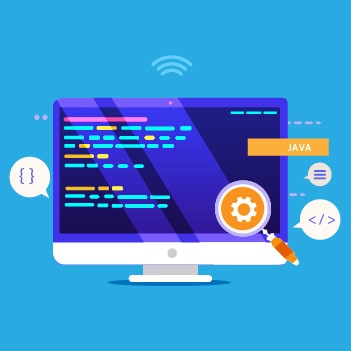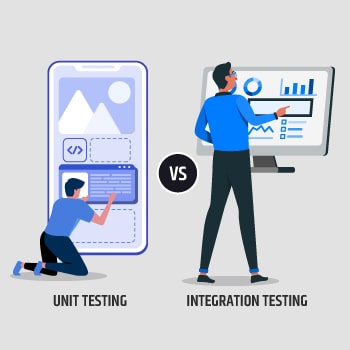
- Unit Testing Overview
- Why Should One Opt For Unit Testing?
- What Is Integration Testing?
- What Is The Process Of Integration Testing?
- Techniques Of Integration Testing?
- Unit Testing vs Integration Testing
- When Should Unit Testing Or Integration Testing Be Preferred?
- Consequences Of Not Performing Unit And Integration Tests
- Conclusion
Software testing techniques are performed to validate the application under test (AUT) against the functional or non-functional requirements. Each type of testing, such as regression testing, performance testing, security testing, software automated testing, etc., ensures that testers identify specific types of defects. Hence, multiple testing techniques are performed to ensure the application meets acceptable quality standards.
Unit Testing Overview

It is a testing method where the smallest testable element of code, known as a unit, is tested. A unit can be a method, function, subroutine, object, procedure, etc. These individual elements, known as a unit, are tested to ensure they are functioning as expected. Developers are involved in unit tests, and thus early identification of bugs and issues occurs. It is known as White box testing.
Developers use stubs, mock objects, unit testing frameworks, and drivers to perform unit testing. Evidently, the code readability is increased, and code can be reused through the effective conduction of unit testing, which also improves Deployment velocity.
Why Should One Opt For Unit Testing?

The following are four key reasons for performing unit testing in software development:
Enables quick and easy integrations:
Unit testing enables upgrading the entire system libraries and refactoring the application code. The code changes that may not go well with the application’s design can be deciphered, leading to better code maintenance. When bugs are detected in existing functionality, unit testing ensures these bugs are perfectly addressed. When each application unit is thoroughly evaluated and tested, the units integrated later in the software development life cycle become even more accessible.
Reduces development costs significantly:
Unit testing ensures that the time, expense, and other resources used for development are decreased considerably. When the code of a function is written, the bugs are detected and fixed instantly. The time and cost to detect and fix bugs are reduced by correctly applying the unit test method.
Provides effective documentation:
Product findings and implementation process are effectively documented through the unit test methodology. Suppose the team members want to learn about what functionality is provided by one module or another. In that case, the team members can refer to the specific documents to understand the system and the module’s logic. Indicators are represented by unit test cases that carry information about the inappropriate or appropriate use of a software component. Thus, the unit test cases provide perfect documentation for these indicators.
Code coverage is enhanced:
Some developers believe that 100 percent of the code must be covered, while others believe there must be a complete code coverage policy. This scenario depends upon the organization and the project stakeholders. Many tools support unit tests in determining the total percentage for covering the project, function, or separate modules. Knowing whether a particular line will be executed while writing code is essential. Using unit testing coverage metrics, developers can decide whether a code line is necessary.
What Is Integration Testing?

It is the second testing phase of the Software Testing Life Cycle (STLC) process and is performed after unit testing. It is a testing method where individual components or units of the application are tested in a group. Then the application behaviour is verified in terms of performance when integrated. This testing method ensures that defects are exposed during the interaction between units or integrated components.
What Is The Process Of Integration Testing?

Choose the module:
The suitable component or module need to be selected and tested based on the strategy
Perform unit testing:
Unit testing is performed on all the features of the component or module that has been selected
Deploy the module:
Deployment of the chosen components or modules to the required initial fixes is done to get the integration testing running
Perform Functional testing:
All the use cases for the components that have been chosen are tested
Perform Structural testing:
The chosen components are tested by conducting structural testing
Analyze the results:
The results of the testing mentioned above activities are recorded, and the above steps are repeated until the product, application, or system is thoroughly tested.
Techniques Of Integration Testing?

Top-down Integration testing:
It is a testing method where integration testing takes place from top to bottom, based on the software system’s control flow. The testing of higher-level modules takes place first, and then the lower-level modules are tested and integrated to check the software functionality.
Bottom-up Integration testing:
In this testing method, lower-level modules are tested first, and then the testing of higher-level modules is facilitated. The testing process continues until all the top-level modules are tested.
Sandwich/Hybrid Integration testing:
It is a testing method where both the top-level and lower-level modules are tested simultaneously. It combines the functionalities of both top-down integration testing and bottom-up integration testing methods.
Big bang testing:
All the modules are integrated at once in this testing type. After integration, the system is verified to ascertain whether it is working as expected. If the wholly integrated module is identified with a defect, knowing which module caused the issue becomes a cumbersome process. Even if the fault is detected, fixing the same would cost relatively high because the bug was identified later.
Unit Testing vs Integration Testing

Both unit testing and integration testing are forms of functional testing that require coding and testers. Additionally, both types of testing use similar or even the same types of tools. Here are the key differences between unit testing vs integration testing:
| Tests the single component of the whole system, i.e., tests a unit in isolation | Tests the system components working together, i.e., test the collaboration of multiple units |
| Unit tests are faster to execute | Integration tests may run slow |
| There is no external dependency, and all external dependencies are stubbed out | Integration testing requires interaction with external dependencies such as database and hardware |
| It is a simple process | It is a relatively complex process |
| Generally performed by developers | Performed by QA team engineers |
| It is a type of white box testing | It is a type of black box testing |
| Carried out at the initial testing phase; may be performed anytime later | Integration testing takes place after unit testing and before system testing |
| Maintenance is cost-effective | Maintenance is relatively expensive |
| Begins with the module specification | Begins with the interface specification |
| Unit testing has a narrow scope as it just checks if each small unit or segment of the code is performing as per the expectations | Integration testing has a broader scope as it covers the entire application |
| Unit testing leads to the detailed visibility of the code | Integration testing leads to the clear visibility of the integration structure |
| Unit tests only help uncover the issues within the functionality of individual modules and do not validate the integration errors or system-wide problems. | Integration tests help uncover the bugs that arise when a number of modules interact with each other |
When Should Unit Testing Or Integration Testing Be Preferred?

Unit testing
It should be performed during the application development cycle. Ideally, the unit test should be written simultaneously while writing the code. Unit tests method before writing production code. If a unit test fails, testers know precisely which part of the code is not working correctly. This kind of feedback can help testers report the bugs to the Dev team, which fixes the bugs immediately instead of returning later to debug and find the bug in the code.
Integration Testing
It is usually performed during the earlier stage of the software development cycle. Selenium testing allows continuous testing of each daily build automatically. It is recommended that the integration tests are run when needed to ensure the units’ performance, reliability, and function.
Consequences Of Not Performing Unit And Integration Tests

Every strategic approach to ensuring seamless apps needs to embed the fundamental testing processes and should give allocate resources to facilitate bug-free execution. Every test approach has a crucial area to cover, and any negligence may pull down the overall quality of the application.
Without unit testing, it is likely that most of the bugs will remain undetected and will be revealed after the development stage. In such cases, QA engineers will look for the bugs and create tickets, after which the Dev team will fix those bugs and close the tickets. This leads to spending a lot of precious time and effort taken to fix bugs that could have been detected and fixed earlier to prevent code redeployment.
Likewise, integration testing is necessary to ensure that third-party applications and internal modules of an application perform well when the combination is tested together. In the absence of integration testing, the application will not undergo critical user-based scenarios and will fail to reveal the integration bottlenecks of the application.
Conclusion
The bottom line is that unit and integration tests successfully lead to developing a seamless software application without conducting both. However, when you compare unit testing vs integration testing both of them can reveal coding weaknesses that the other missed. It can also offer developers the necessary safety net needed to move forward with other automated tests that measure different levels of their application’s functionality and ensure that there are no back-end issues with the application’s infrastructure.
Discover more
Get in Touch
Stay Updated
Subscribe for more info




